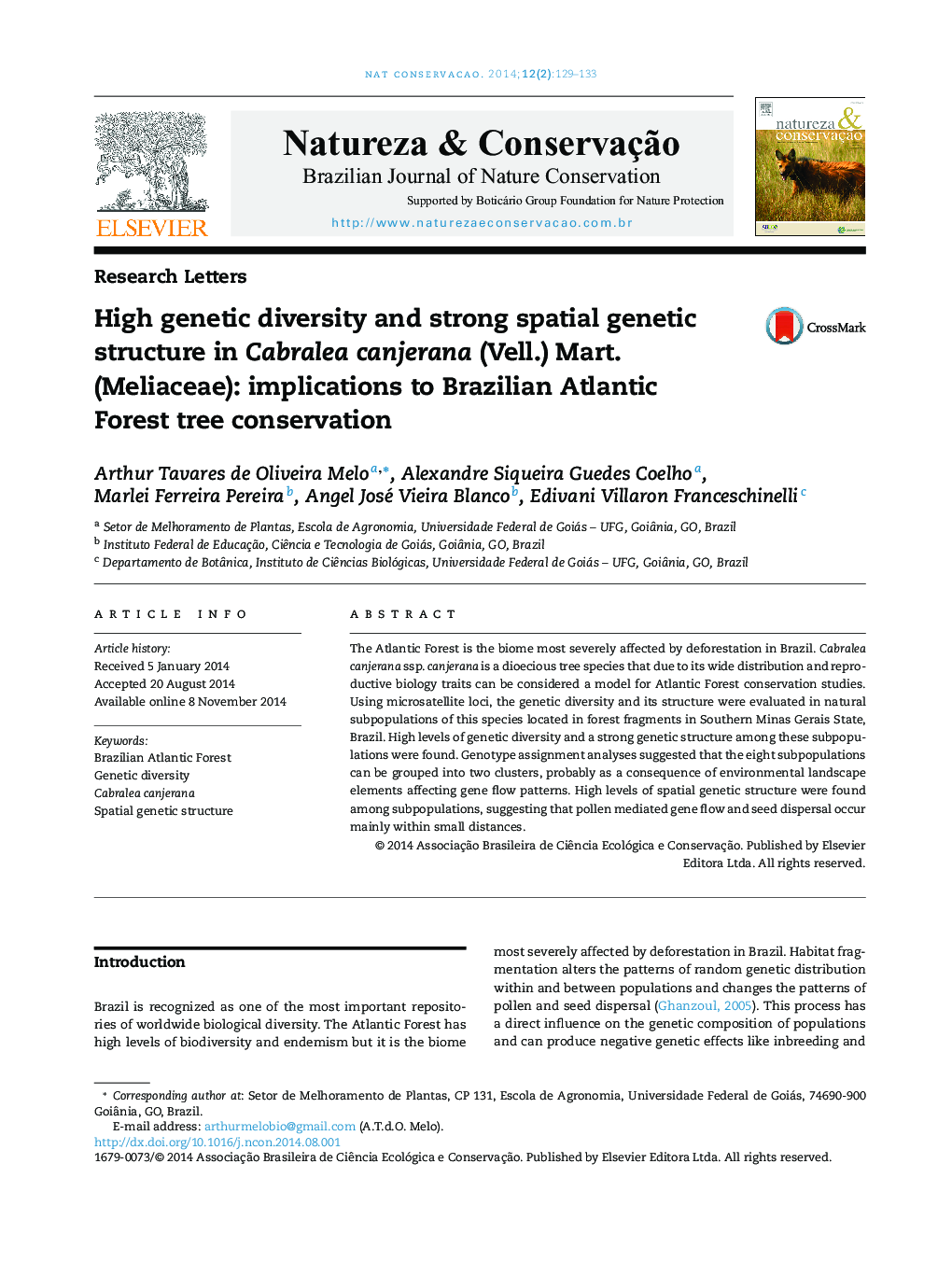| Article ID | Journal | Published Year | Pages | File Type |
|---|---|---|---|---|
| 4400809 | Natureza & Conservação | 2014 | 5 Pages |
The Atlantic Forest is the biome most severely affected by deforestation in Brazil. Cabralea canjerana ssp. canjerana is a dioecious tree species that due to its wide distribution and reproductive biology traits can be considered a model for Atlantic Forest conservation studies. Using microsatellite loci, the genetic diversity and its structure were evaluated in natural subpopulations of this species located in forest fragments in Southern Minas Gerais State, Brazil. High levels of genetic diversity and a strong genetic structure among these subpopulations were found. Genotype assignment analyses suggested that the eight subpopulations can be grouped into two clusters, probably as a consequence of environmental landscape elements affecting gene flow patterns. High levels of spatial genetic structure were found among subpopulations, suggesting that pollen mediated gene flow and seed dispersal occur mainly within small distances.
